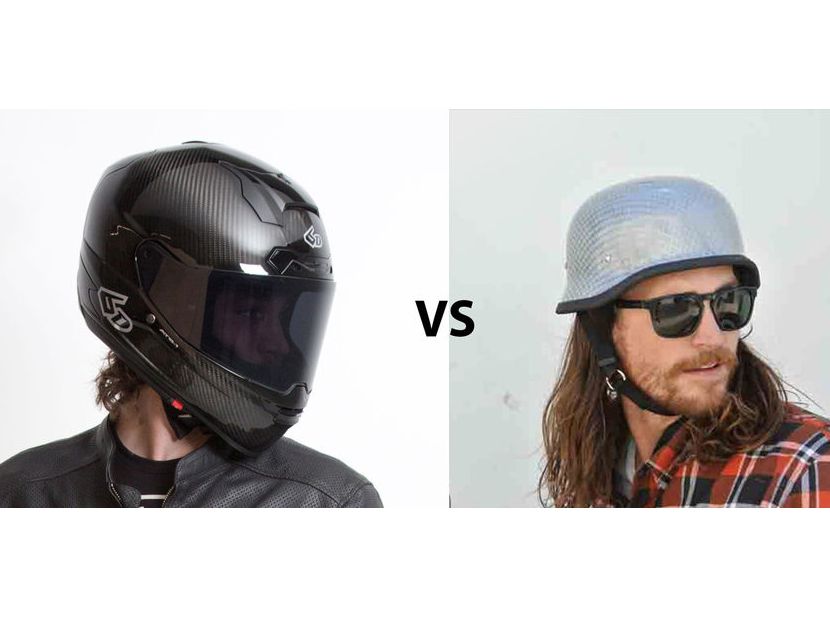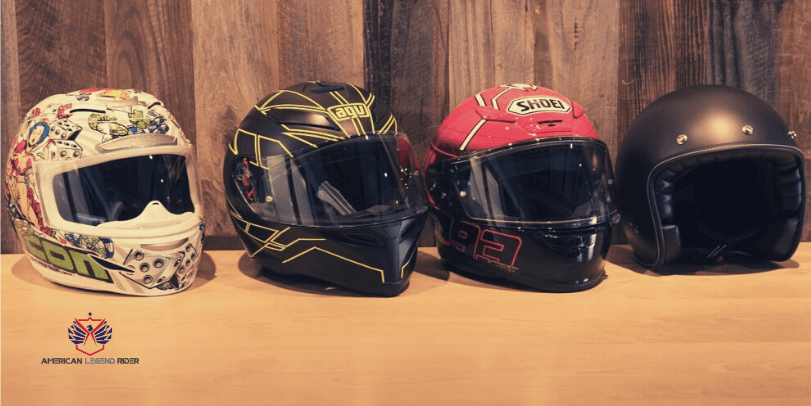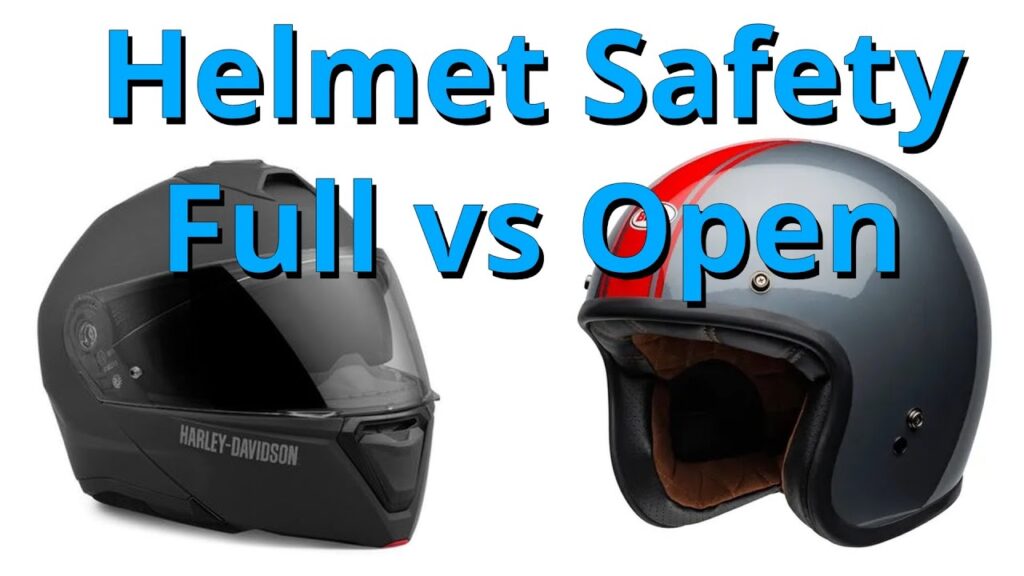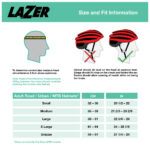A full-face helmet covers the entire head and face, while a half helmet covers only the top of the head. Motorcycle helmets are essential for rider safety.
Full-face and half helmets serve different purposes. Full-face helmets provide maximum protection, covering the entire head and face. They offer better wind and debris protection. Half helmets, on the other hand, cover only the top part of the head. They are lighter and offer more ventilation but less protection.
Choosing the right helmet depends on your riding style and safety priorities. For those who prioritize safety, full-face helmets are a better choice. Riders seeking comfort and airflow might prefer half helmets. Each type has its advantages and disadvantages. Understanding these differences helps in making an informed decision.
Full-face Helmet
A full-face helmet covers your entire head and face. It provides maximum protection for riders. Let’s explore its design and structure, and its safety features.
Design And Structure
A full-face helmet has a hard outer shell. This shell protects against impacts. Inside, there is a foam layer that absorbs shock. The helmet also features a chin bar. This bar protects your jaw and chin. The visor shields your eyes from debris and wind. Air vents keep you cool during rides.
| Component | Function |
|---|---|
| Outer Shell | Impact Protection |
| Foam Layer | Shock Absorption |
| Chin Bar | Jaw and Chin Protection |
| Visor | Eye Protection |
| Air Vents | Cooling |
Safety Features
Full-face helmets offer superior protection. They reduce the risk of head injuries. The chin bar is a crucial safety feature. It protects your lower face during crashes. The foam layer inside absorbs impact energy. This reduces the force on your head. The visor also protects your eyes from flying debris. Air vents help prevent overheating.
- Maximum head and face protection
- Chin bar for jaw safety
- Shock-absorbing foam layer
- Visor for eye safety
- Cooling air vents
Choose a full-face helmet for the highest safety level. Its design and features make it ideal for all riders.

Credit: www.motorcyclecruiser.com
Half Helmet
Understanding the differences between helmet types is crucial for safety. A half helmet offers distinct features compared to a full-face helmet.
Design And Structure
A half helmet covers the top of your head. It leaves your face and chin exposed. This design provides a sense of freedom. Riders feel the wind on their face.
Half helmets are lightweight. They are easy to wear. They often come with minimal padding. This makes them comfortable for short rides.
Safety Features
Half helmets offer basic protection. They cover the skull but not the face. They are less protective than full-face helmets. Their open design is a trade-off for comfort.
Some half helmets include a visor. This helps shield your eyes from sunlight and debris. They may also have a chin strap. This keeps the helmet secure during a ride.
Half helmets meet basic safety standards. Look for DOT certification. This ensures minimal safety compliance.
Comfort And Fit
Understanding the comfort and fit of helmets is crucial for riders. The right helmet should provide protection and comfort. Let’s explore the differences between full-face and half helmets in terms of comfort and fit.
Full-face Comfort
Full-face helmets offer comprehensive head coverage. This includes the chin and face. They usually have thick padding inside. This padding ensures a snug fit. The full coverage helps in reducing wind noise. Riders feel more isolated from external noises. Most full-face helmets also come with ventilation systems. These systems keep the rider cool during long rides. The snug fit can be adjusted with the use of cheek pads. These can be removed or added for a better fit.
Half Helmet Comfort
Half helmets cover only the top of the head. They are lighter compared to full-face helmets. This makes them more comfortable for shorter rides. The open design allows more airflow. Riders feel cooler, especially in hot weather. Half helmets often have a simple strap system. This ensures a secure fit without much adjustment. They do not have the extensive padding of full-face helmets. This can make them feel less restrictive. Riders can hear their surroundings better with half helmets. They offer a more immersive riding experience.
Protection Level
Understanding the protection level of helmets is crucial for safety. Full-face and half helmets offer different levels of protection. Knowing these differences can help riders make informed choices.
Impact Resistance
Full-face helmets provide superior impact resistance. They cover the entire head and face. This design helps in distributing the force of impact evenly. Full-face helmets offer better protection against serious injuries.
Half helmets cover only the top of the head. They provide less impact resistance compared to full-face helmets. In case of an accident, they protect only a limited area of the head.
| Helmet Type | Coverage | Impact Resistance |
|---|---|---|
| Full-Face Helmet | Entire head and face | High |
| Half Helmet | Top of the head | Low |
Weather Protection
Full-face helmets offer excellent weather protection. They shield the rider from rain, wind, and debris. The full-face design also helps in maintaining a stable temperature inside the helmet.
Half helmets provide minimal weather protection. Riders can feel the direct impact of weather conditions. This can be uncomfortable and distracting, especially during long rides.
- Full-face helmets protect against rain and wind.
- Half helmets leave the face exposed to weather elements.
Choosing the right helmet depends on the rider’s needs. Full-face helmets are ideal for maximum safety and comfort. Half helmets are suitable for those who prefer a lighter and cooler option.
Visibility And Hearing
Understanding the differences in visibility and hearing between full-face helmets and half helmets is crucial for any rider. These factors significantly impact safety and comfort during rides. Let’s explore how each helmet type affects your field of view and noise reduction.
Field Of View
A full-face helmet offers a more restricted field of view compared to a half helmet. The design covers your entire head, including your chin and face, which can limit peripheral vision. Riders might find it harder to see objects coming from the sides.
In contrast, a half helmet provides a wider field of view. The open design leaves more room for your eyes to see around. This can make it easier to spot vehicles and obstacles on the road.
Noise Reduction
When it comes to noise reduction, full-face helmets excel. Their enclosed design helps block wind and road noise, making your ride quieter and more enjoyable. This can reduce fatigue on long trips.
Half helmets, on the other hand, offer minimal noise reduction. The open design lets more wind and ambient sounds reach your ears. Riders may experience more distractions and noise fatigue.
| Feature | Full-Face Helmet | Half Helmet |
|---|---|---|
| Field of View | Restricted | Wider |
| Noise Reduction | High | Low |

Credit: m.youtube.com
Aesthetics And Style
Helmets are essential for rider safety. They also contribute to your style. The choice between a full-face helmet and a half helmet affects your look. Let’s explore the aesthetics of each type.
Full-face Styles
Full-face helmets cover your entire head. They are sleek and modern. You can find them in a variety of colors and designs.
Many riders prefer full-face helmets for their aggressive look. They often feature aerodynamic shapes that enhance their appeal.
- Graphics: Many full-face helmets come with bold graphics.
- Visors: Some have tinted or mirrored visors for added style.
- Shapes: Different shell shapes cater to different tastes.
These elements make full-face helmets popular among sportbike riders. They project a sense of speed and power.
Half Helmet Styles
Half helmets, also known as brain buckets, offer a different vibe. They provide a retro and classic look. Many cruiser riders prefer them.
Half helmets expose more of your face. This makes them ideal for those who like the wind on their face.
- Minimalist Design: They have a simple and clean appearance.
- Customization: Many come with options for custom paint jobs.
- Accessories: Riders often add goggles or sunglasses for style.
Half helmets are great for a laid-back and carefree look. They blend well with classic bikes and casual riding outfits.

Credit: americanlegendrider.com
Frequently Asked Questions
What Is A Full-face Helmet?
A full-face helmet covers the entire head and face. It provides maximum protection by encompassing the skull and chin. Its design includes a visor that shields the eyes.
What Is A Half Helmet?
A half helmet covers only the top of the head. It provides minimal protection compared to full-face helmets. This type is popular for its lightweight and open design.
Which Helmet Offers Better Protection?
A full-face helmet offers better protection. It covers more areas of the head and face, reducing injury risk in accidents.
Are Full-face Helmets More Comfortable?
Full-face helmets can be more comfortable. They offer better insulation from wind and noise, enhancing the riding experience.
Conclusion
Choosing between a full-face helmet and a half helmet depends on your needs. Full-face helmets offer more protection. Half helmets provide better airflow and visibility. Consider your riding style and safety priorities. Make an informed decision to ensure a safe and enjoyable ride every time.


